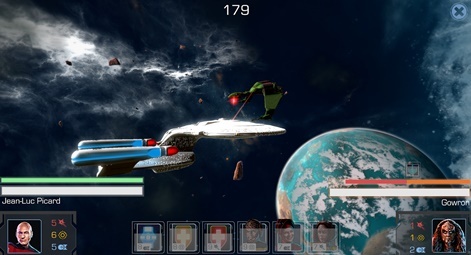Games publisher Tilting Point has changed significantly over the last two years.
Back in November 2016, the New York-based publisher opened up a $12 million user acquisition fund called Game Alliance, with the goal to help independent mobile developers market their games.
But after rapidly exhausting that fund, in July 2018 the company said it was committing to an annual investment of $132 million in mobile games UA - though last year it actually spent around $40m to $45m. At the time the company said the fund was to help games break through, support marketing efforts both through the funding and Tilting Point’s own expertise and technology, and support live operations.
Games the firm supports include Disruptor Beam’s Star Trek Timelines, to which it previously invested $29m in in September 2018. Tilting Point is also harnessing the developer’s new live ops platform Disruptor Engine.
Other partners are Edgeworks Entertainment’s TerraGenesis, which it scaled by 10-times in a year-and-a-half (see our recent interview here), and Nukebox Studios’ Food Truck Chef.
Live games publishing
All of these games were already live when Tilting Point partnered with these studios, they just needed the support in scaling. And it’s this push into what the company’s president Samir El Agili calls 'live games publishing' that has helped it grow considerably.
“We had an unbelievable 2018,” El Agili tells PocketGamer.biz.
“We're a company that went from $9.5m to $45m in revenue. So we grew five-times last year, if you look at two years ago, we grew 10-times in terms of revenue.”

El Agili says there are a number of games currently on the mobile marketplace that are undervalued and Tilting Point sees opportunities in helping these titles scale.
He says these titles can grow in two ways: by good marketing to the right audience and by improving KPIs to get higher monetisation.
We had an unbelievable 2018. We're a company that went from $9.5m to $45m in revenue.Samir El Agili
Not just providing a UA fund, then, Tilting Point aims to support live ops development. But it’s all part of a progressive partnership that moves through phases.
“The first thing we are going to do is look if we can scale your game in a new way, better than the developer has in the past,” says El Agili.
“So, we're going to provide expertise, internal technology around UA, which I believe are probably the best in the world, funding, and the creatives as well. And we're going to do that with very little commitments. And if it works, fantastic, if it doesn't, we stop the relationship there and we're going to go to other things.
“If that scales and it does really well... then there's a point where the cost per install will get a little higher, and it's going to become more difficult, and then we're going to start improving the game itself.”
The way Tilting Point does this is by assigning product managers and games designers who have expertise in improving existing games and increasing the lifetime value of users. This could be done through dynamic pricing, bundle management, reengaging churned users or adapting games to different target audiences.
Tilting Point isn’t redesigning games for developers, El Agili stresses, but rather refining them to give these titles a better chance of scaling.
One of the key technologies powering the publisher’s services is machine learning and its own ‘Dynamically Optimises Revenue Automation’ tool DORA. This enables the company to automate user acquisition at a large scale, automatically changing the pricing on bids of each campaign.

Player cohorts from these campaigns can have their spending tracked, which will then inform whether bids should be increased or decreased.
“On a large scale this is a system that is really enabling us to be more efficient than a lot of companies out there,” says El Agili.
“There are a few companies that are starting to build similar systems, but we're constantly improving that.”
Big bets
While El Agili is confident of getting good returns on its largest investments, just how lucrative is the market for publishing small to mid-tier games?
Flaregames has tried this model in the past but was unable to make good returns on its outlay, resulting in 45 layoffs and company restructuring.
When you take a game that is top 2,000 and you bring it to the top 300, you're making a real significant difference for the partner.Samir El Agili
Scopely meanwhile attaches big IP with development partners, and will not publish unless it thinks it has a sure-fire hit. The success of Star Trek Fleet Command, and Scopely’s subsequent acquisition of its developer Digit Game Studios, is a testament to having patience and focusing on the big hits.
But El Agili sees opportunity outside the top 100 grossers and refers back to those undervalued titles in the top 1,000 or even 2,000 that can still be improved and scaled up.
“There are billions of dollars of revenue in that segment,” he states.
“When you take a game that is top 2,000 and you bring it to the top 300, you're making a real significant difference for the partner. You're bringing them a lot of profits, and for ourselves the publisher as well.
“This part of the market is not looked at as much as your top 10 top or 100 grossing. So I do think that for independent developers that are 50 people, 100 people, or 10 people or five people this is a very significant business for them and you can make a real difference. We've done it and we've done it multiple times.
“Almost A Hero is another example of a developer that we really helped, and Food Truck Chef where we spent $18 million dollars and these guys are seeing a lot of profitability out of this.”
As Tilting Point looks to grow its own business alongside its partners, the company is planning to double its growth. To that end it recently opened a Barcelona office which now staffs 20 employees, bringing the company’s total headcount to 80. One key area of focus for the company is in its creatives team and technology.
“On average today we do eight creatives per week per game, and three videos. It's probably going to be 10 [a week] within this year and maybe much more next year,” states El Agili.
“We have an amazing creative team, I'm super excited, but it's a lot of work, for sure.”





















